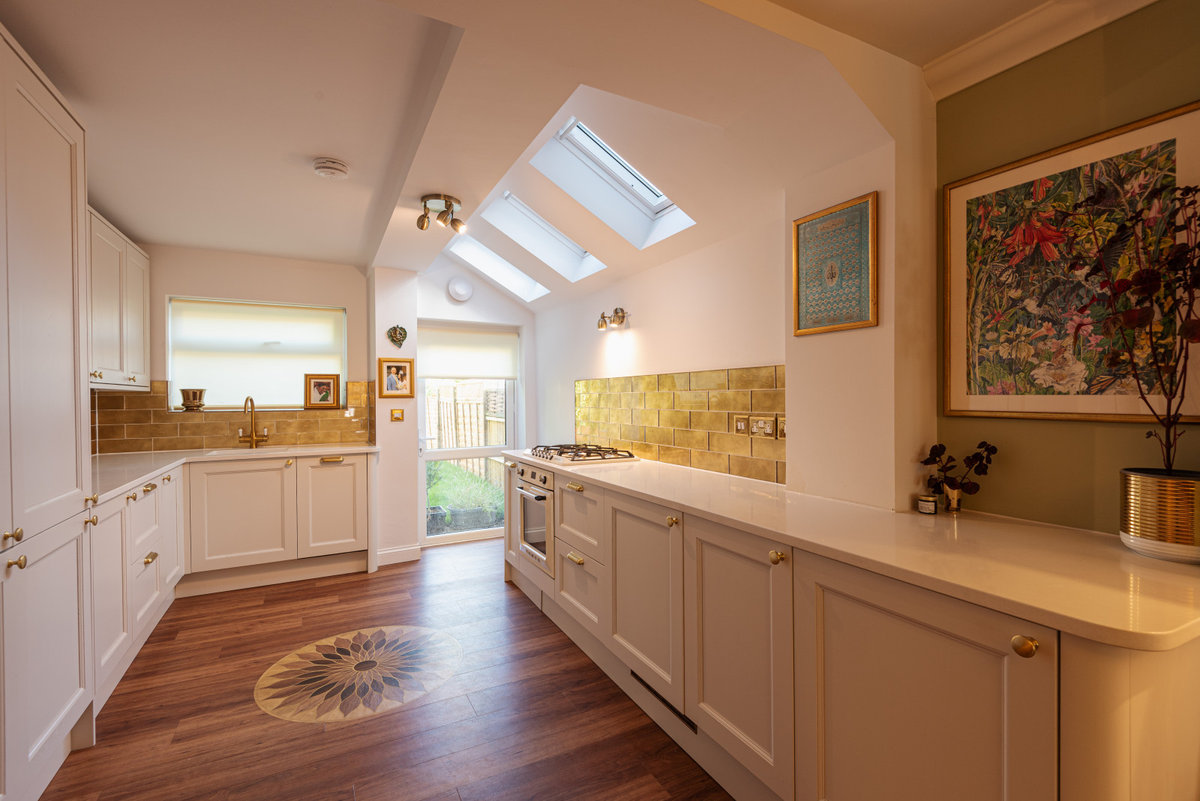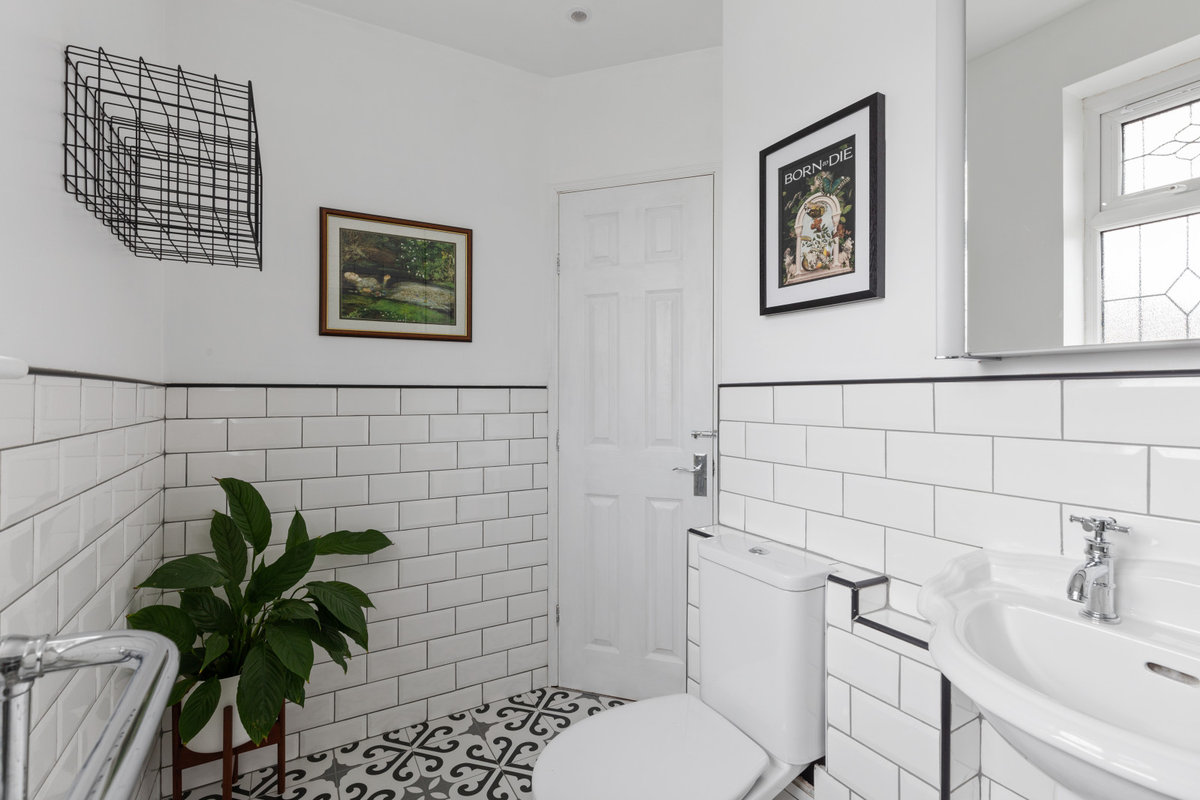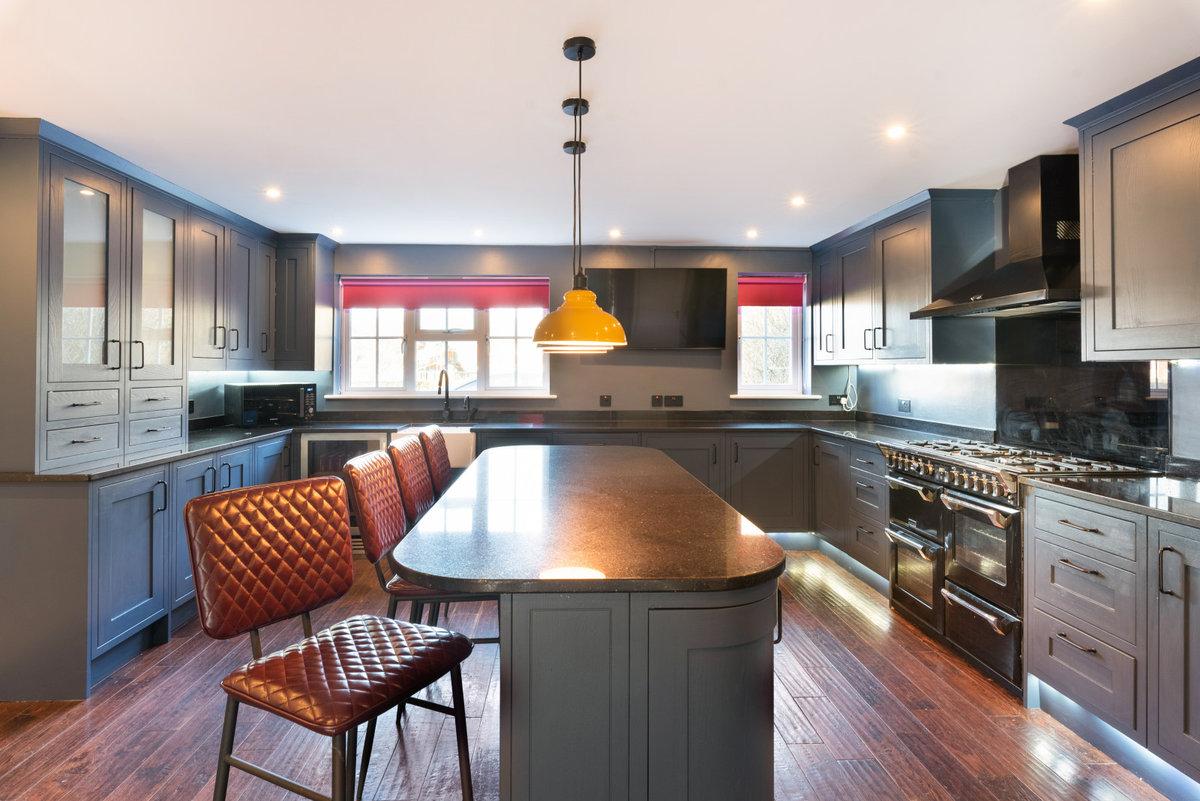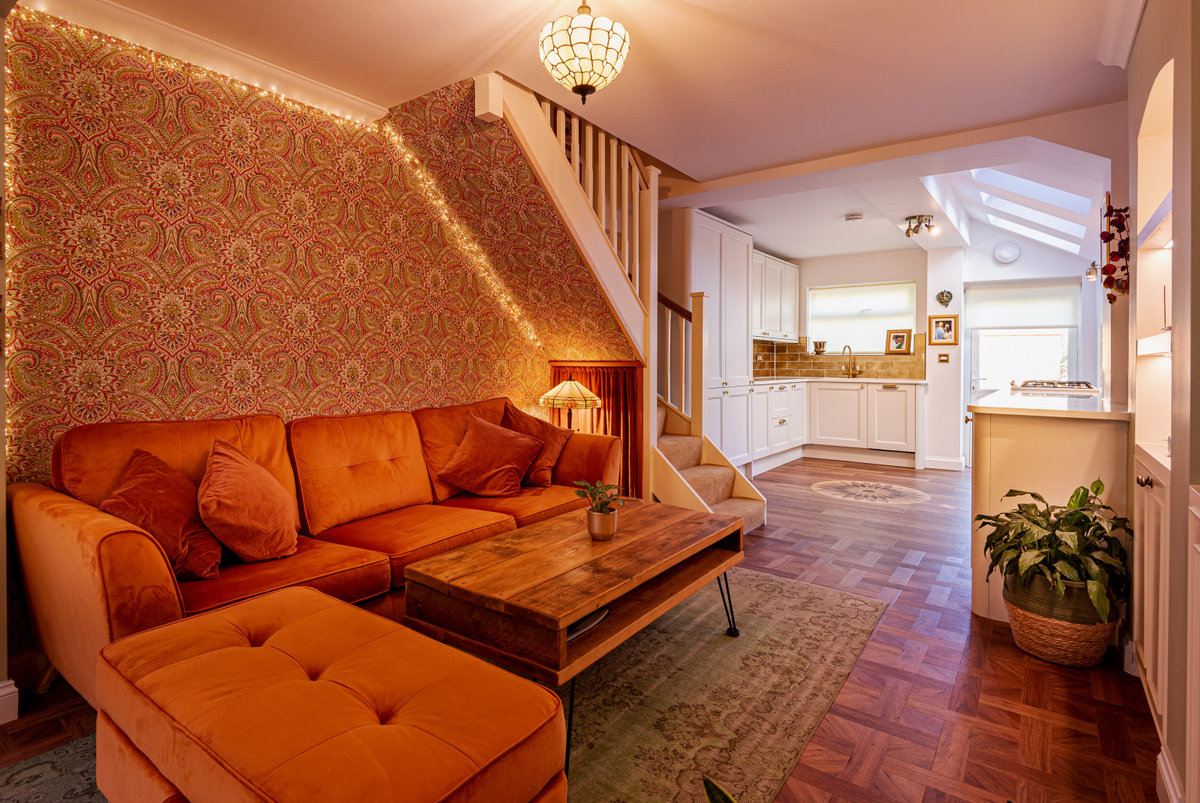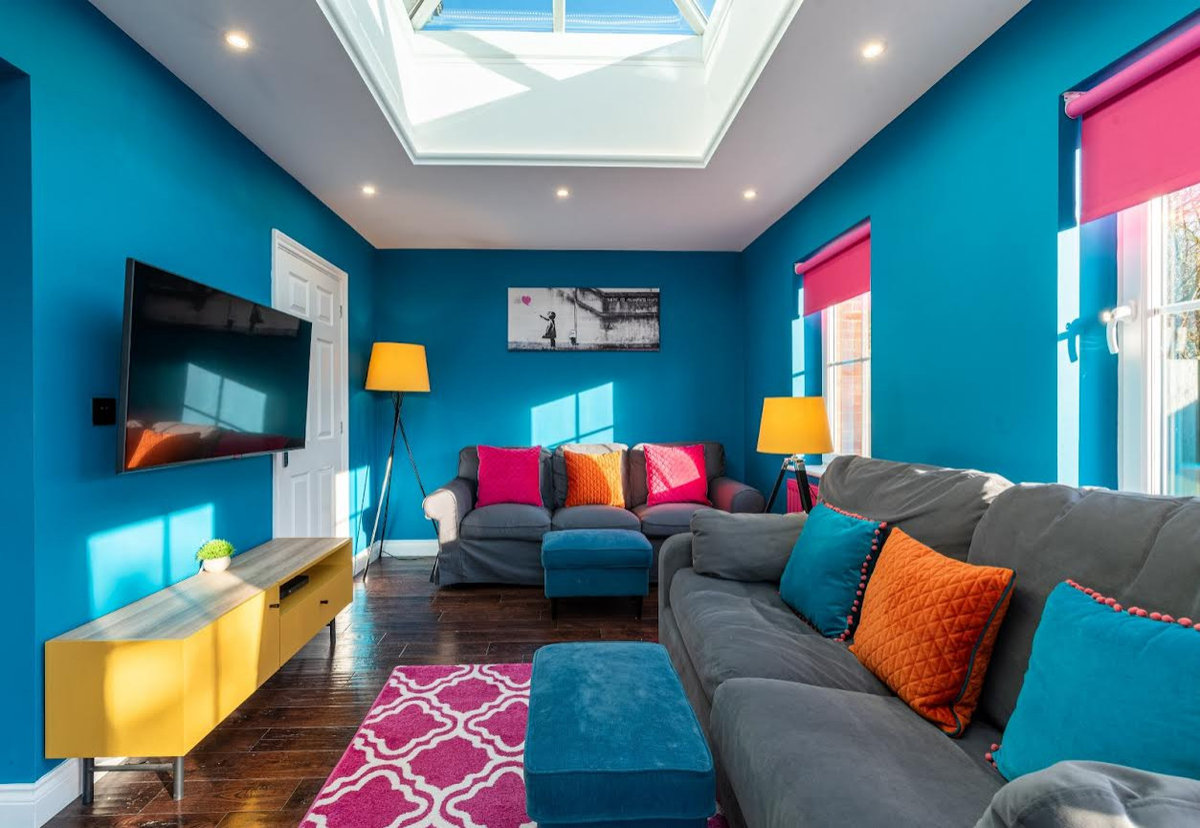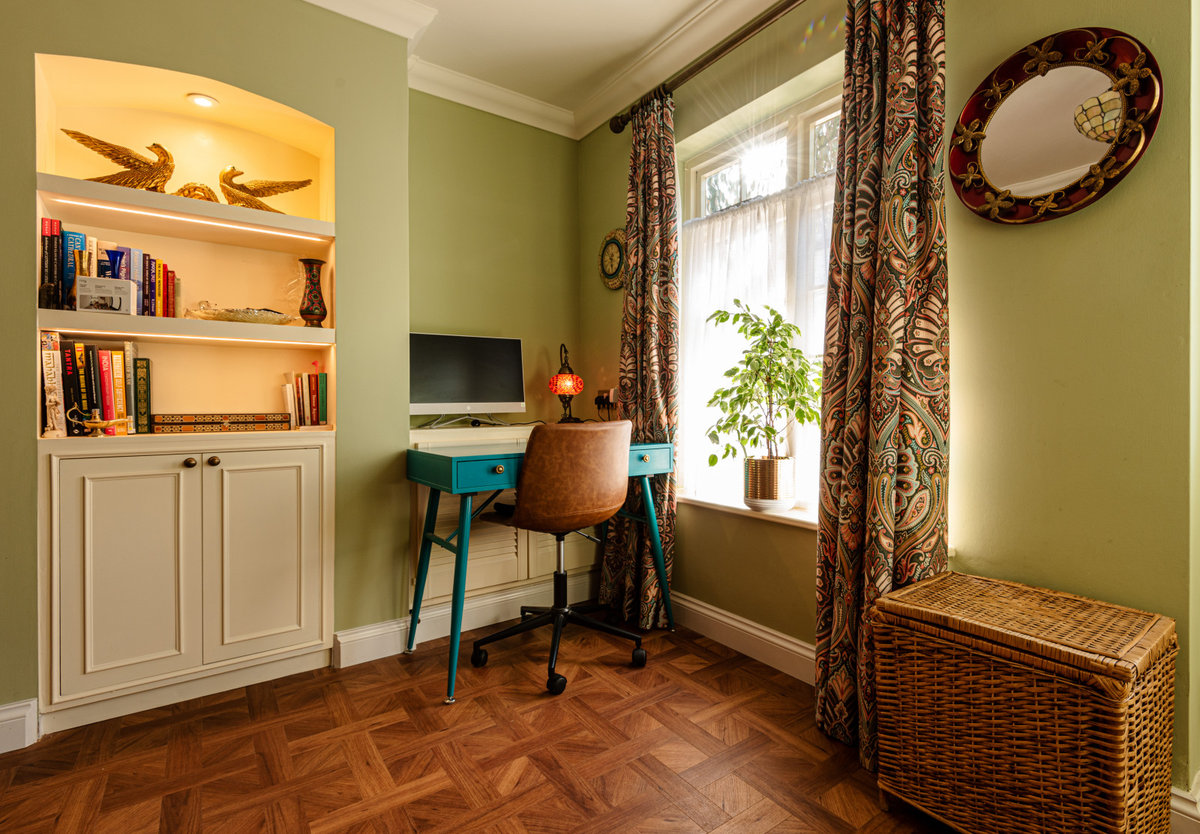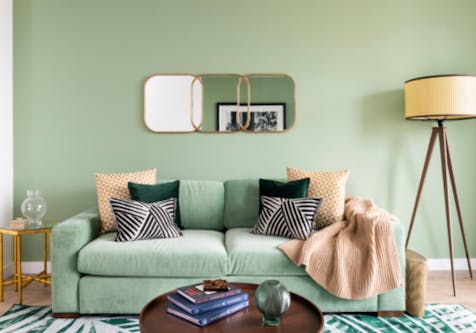Fresh Off The Interior Design Starting Block, Beth Grace Shares Her Tips On Getting Through The First Year
From bossing her niche to managing her time wisely, this new-on-the-scene interior designer is already navigating the industry like a seasoned pro.

Working as a buyer and seller of contemporary art for nearly 10 years, Beth Grace suddenly had a light-bulb moment. “I was working in commercial galleries and encountering many homeowners struggling to find art that would work with their interiors, so I said to myself why not start with the art? I saw this connection between art and interior design and how it brought all my passions together,” she says.
Soon after her revelation, Grace went on to obtain a diploma at the British Academy of Interior Design. This gave her the confidence and credibility to launch her interior design company, Start With Art Interiors, which focuses on cohesively integrating existing art works or new pieces into room schemes. “My background in History and Philosophy of Arts, as well as my industry experience working in art galleries, gave me a huge confidence boost to branch into this different field on my own,” says Grace.
Now into her second year of working with professional clients, Grace shares what she has learned so far, offering advice to industry newcomers on believing in your ability, and identifying the right clients for you. She also reveals why adopting management software early on is the key to success.
Trust your instincts
Although the competitiveness of the art industry armed Grace with important problem-solving skills that she was able to transfer, she believes nothing quite prepares you for the varied day-to-day challenges of being an interior designer, other than learning on the job. “Obviously you have to have a good grasp of the core principles and business side of interior design before starting out. However, I found a lot of it was learning and doing it as you go,” she says race. “You never know what’s going to happen day to day as it’s such a varied career, and no matter how much book learning you do, you’re never going to be fully prepared unless you just go for it.”
It’s no surprise that newbie design pros feel apprehensive when starting out, but a little trust in yourself and your skills goes a long way. “If you’ve qualified and you're passionate about wanting a varied job that's demanding yet rewarding, go for it,’ says Grace.
Find your niche and commit
Many newcomeres to the industry would like to know how to make their business stand out from the competition and Grace has an interesting spin on the answer. “Despite identifying a gap in the market, I wasn’t confident enough to pursue this direction when I first started out,” she says. “Instead, I took any design work I could get, but soon realised it wasn’t what I was about, so I returned to my initial premise to carve out my own unique space within the interior design world. It definitely pays to stick to your beliefs from the beginning, particularly if it’s a great idea that’s going to get you noticed.
Now into her second year of business, Grace is fully channelling her art-based interior design. She helps clients create cohesive rooms schemes that complement the art work, whether it's through the colours, tones or subject matter. “I do think it is quite a unique thing about my business and it is something that I need to push a bit more, which is definitely what I’m going to be doing from now on,” she says.
Identify your target market
Not only do you need to define your style, you also need to know the kind of clients that your work will appeal to. For example, luxury, high-end interior design suits a certain client with the right income level in the right location, while designing for new-build homes works only if you have plenty of new estates in the area. It’s important to spend time understanding the end result you want to achieve, as this will help you appreciate who your ideal client is and whether you are advertising your services in the places that will reach them, such as on Houzz or other social platforms.
For Grace, despite being based in Kent where there are plenty of affluent homeowners residing in large rural-style homes, such as converted barns or farmhouses, she still relies on her Houzz profile to generate leads. “My profile shows I cover south and north Kent, so it’s quite a niche area of wealthy homeowners, many of whom have moved from London seeking more space and quieter life in the country. Then, when I receive any leads, it’s about answering them promptly and pursuing them in the right way so they convert to projects,” she says.
Grace believes in establishing a friendly yet professional relationship with clients from the outset, by asking questions about their lifestyle. “I am quite a chatty person. I like to be friendly with my clients and get along with them. After all, they are allowing me into their home to transform it,” she says. “I ask them a bit about themselves – where they’ve come from, why they’ve moved to Kent, how long they’ve lived in the property. I also like to ask what is the purpose of the space or the house and who is going to use it. Is it going to be for grandkids, for example. I then draw out their interior design style through conversations and initial mood board sessions. In that way you really get to know them, and often, they become friends, referring me to other people.
“To be a successful and well-liked interior designer, it’s a combination of great execution and personable communication,” she continues. “You can be the friendliest person in the world, but if the design isn’t up to scratch, you’re not going to get a referral from that client. A lot of it is about opening the lines of communication and making yourself available. I think that is one of the good and bad things about being an interior designer - finding that work-life balance. You do need to make yourself available to your clients almost at all times because often, people will be scrolling on the internet outside of work hours, send you a message saying, ‘I love this, what do you think of this?’. I’m not saying you have to reply all the time, but I think it’s nice to keep that level of engagement up so that you feel like you’re in this together.’
Choose the right tech tools early on
The first few months of starting your own interior design business can be an apprehensive and stressful time. That’s why Grace suggests investing in technology early on, such as Houzz Pro management software, so you can establish efficient business practices from the beginning, allowing you to focus on growing the business and attracting new clients. “Speaking as someone who didn't join Houzz Pro immediately, the amount of Google documents I had saved in so many different locations was mad,” says Grace. “Now, however, all my documents are in one really useful place linked to that exact lead, with the entire history of that client easily obtainable.”
Grace strongly advises putting time and effort in at the start to learn the software and what benefits it can bring to your business. “It’s really worth taking all the tutorials that are offered to learn the tools. I’ve had some clients now for over a year, and Houzz Pro allows me to keep track of all of their documents and correspondence. If that was all on different platforms, that would take hours to keep track of, whereas I have it all there in one or two clicks. It’s quite hard to quantify how long this has saved me, but to put it into context, I went for a two-hour bike ride because I’m on top of all my admin.”
Stay transparent and professional
Once you’ve nailed your first few clients, it’s critical to establish a clear and transparent payment system, so they know what to expect and you can retain a steady cash flow. Grace relies on Houzz Pro breakdowns to ensure her clients are kept on track with the payment schedule in a friendly and polite manner. “At the beginning, I was charging 50% at the start and then 50% at the end of a project, which I think is industry standard. However, when a project lasts longer than say 12 months, that is a long time to wait between paying payments. It can start to feel like you are working without getting paid, resulting in you losing passion for the project, just because of the way you’ve structured the pay. Now I do 25% at various points, and structure it per project,” she says.
“There are lots of breakdowns you can do with Houzz Pro invoices. I also like to attach another document, which has the same invoice but allows me to write a few more terms and conditions. Being as thorough as possible when it comes to the financial side of things ensures both you and the client feel comfortable.”
When it comes to invoicing her clients, Grace uses Houzz Pro to send smart, professional-looking documents that are easy to create. “It’s important for a client to receive a neat and formal invoice, instead of perhaps an email that simply says to transfer the money. I feel clients are more likely to pay quickly if it comes through official channels,” she says.
The project is not over when it's over
One last incredibly helpful tip from Grace on making the first year of your interior design business a success, is to get professional photographs taken of your projects as soon as they are complete. She believes this not only keeps the line of communication open with the client in case they want any more work in the future, but it also provides valuable marketing material that can be used to promote your services on social channels. “I think it makes such a difference to have professional photographs on platforms where competition is so high. It shows off your business and your product in the best way possible, and when people are scrolling through Houzz looking for designers in their area, high quality photos will definitely help you stand out,” she says.
Grace also ensures she asks her clients to write a review on Houzz, particularly as the platform makes it incredibly easy for them to leave one. “I send the invitation to review, and with one nice and easy click, they can leave their comments,” says Grace.
And now, having recently received a Best of Houzz award, Grace’s hard work and determination to make her business a success from the beginning is truly paying off.

